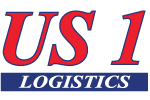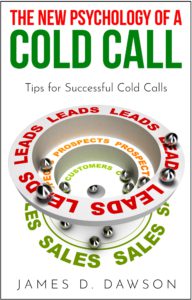“Cold calling is just one move in a bigger strategy—here’s how to win the whole game.”
Cold calling can open doors—but if it’s your only move, those doors often slam shut before you even say hello.
In today’s world, where decision-makers are bombarded with robocalls, sales pitches, and generic outreach, a random call out of the blue doesn’t inspire curiosity—it triggers avoidance. People screen unknown numbers. Voicemails go unreturned. And without a clear, familiar lead-up, even the best pitch can fall flat.
That’s why the top-performing freight broker agents, intermodal agents, and freight agent brokers don’t rely on cold calls alone. They know success lies not in a single tactic, but in a smart combination of strategies that work together to build recognition, trust, and rapport.
Before the call comes:
-
A well-written email warms the lead.
-
A LinkedIn connection puts a face to the name.
-
A comment on a recent post sparks relevance.
So when that call finally does come through, it’s not a stranger on the line—it’s someone they’ve seen, someone who’s added value, someone worth talking to.
This is what separates average agents from those consistently closing deals: sequencing. It’s the art of using multiple touchpoints—at the right time and in the right order—to move from cold lead to warm conversation without feeling like a pushy salesperson.
It’s not just about making a call. It’s about making the right call at the right time—after laying the groundwork.
That’s the secret to breaking through. And once you master it, the conversation starts before you even dial.
📱 Step One: Pair Calls with LinkedIn, Email, or Text
Cold calling works best when it’s not cold anymore.
In today’s relationship-driven sales landscape, the key to successful outreach is warming the path before you call. If someone’s never heard of you, never seen your name, and never received value from you, your call feels like an interruption. But if they’ve seen your name pop up in their inbox or LinkedIn notifications, you’ve already started the conversation—before the phone even rings.
Here’s how to make that happen:
#1: Start with a Light Touch
Send a brief, relevant email or LinkedIn message that shows you’ve done your homework. Mention:
-
A mutual region (e.g., “We both handle freight in the Southeast.”)
-
A specific challenge (e.g., “I’ve seen delays on I-65 impacting a few clients.”)
-
Or a timely industry trend (e.g., “Spot rates have been climbing again in reefer lanes.”)
#2: Provide a Reason to Care
Your goal isn’t to pitch—it’s to connect. Try something like:
“Saw your post on Midwest freight delays—thought it might be worth a quick call to swap notes.”
That line shows relevance, respect, and a shared goal. You’re not asking for business—you’re offering perspective.
#3: Follow Up with the Call
Once your name is in their inbox or LinkedIn inbox, follow up with a quick phone call. Now, when your name pops up on caller ID or a voicemail drops, you’re not just another sales rep—you’re someone who’s shown initiative, value, and timing.
In that moment, you’re no longer a stranger.
You’re a resource.
And that shift—from unknown to known—is what makes people pick up the phone, listen, and engage. That’s the power of sequencing. That’s how modern freight agents earn trust before the pitch—and close more deals because of it.
⏱️ Step Two: Time and Space Your Outreach
No one likes to be bombarded. But if you wait too long between touchpoints, you lose momentum.
A smart sequence might look like:
-
Day 1: Intro email
-
Day 2: LinkedIn request
-
Day 3: Cold call attempt
-
Day 5: Follow-up text or voicemail
-
Day 8: Second call or reply email
Spacing matters. Let the prospect breathe, but don’t disappear.
🔁 Step Three: Use Multi-Touch Cadences
If you’re an intermodal agent or truck freight broker, your shippers are busy. Multi-touch cadences make it easy for them to respond when ready—because you’ve stayed on their radar.
Here’s a simple 5-touch example:
-
Warm intro via email
-
Connection with value on LinkedIn
-
First call: keep it casual
-
Text message with relevant stat or success story
-
Second call or email summarizing how you can help
It’s not spam—it’s structure. It shows professionalism, persistence, and planning.
🚀 Final Take: Winning the Whole Game
Cold calling isn’t dead—it’s just not a solo act anymore. Think of it like a relay race: calling is just one leg. Without the handoff from email or LinkedIn, it often stumbles before it starts.
To truly stand out as a freight agent, drayage agent, or trucking agent, you need a full-court strategy. One that combines timing, platforms, and value in a way that builds trust before you even speak.
That means:
-
An email that opens the door with relevance
-
A LinkedIn touch that puts a face to the name
-
A call that no longer feels cold—because they’ve already “met” you
When your prospect sees your name pop up multiple times—in their inbox, on their feed, and finally on their phone—you shift from being a stranger to someone worth paying attention to. You’re no longer interrupting their day. You’re a familiar voice with timely value.
And that’s when cold calls start turning into conversations.


Recent Comments